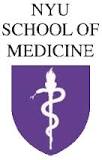Assessment of Treatment Response of Nasopharyngeal Cancer Using Simultaneous 18F-FDG-PET and MRI
| Status: | Recruiting |
|---|---|
| Conditions: | Cancer, Cancer |
| Therapuetic Areas: | Oncology |
| Healthy: | No |
| Age Range: | 18 - 99 |
| Updated: | 2/3/2019 |
| Start Date: | November 18, 2017 |
| End Date: | November 2019 |
| Contact: | Nadia Maknoun |
| Email: | Nadia.Maknoun@nyulangone.org |
| Phone: | 212 263 2717 |
The overarching goal of this study is to develop PET/MR techniques for accurate assessment of
treatment response during and immediately after chemoradiation therapy. The central
hypothesis is that the GMR measured using a simultaneous PET/MR scanner can more accurately
detect residual tumor than conventional SUV measures from PET alone. It is important to note
that SUV depends on both tumor metabolic rate and tracer delivery, which makes the
interpretation of SUV challenging. For instance, inflammatory tissue can have high SUV due to
increased vascularity and vascular permeability and cannot be easily differentiated from
tumor based on the SUV. Investigators hypothesize that inflammatory tissue will have lower
GMR than residual tumor that contain highly proliferating cells with increased expression of
glucose transporters (GLUT). Measuring GMR accurately will improve the specificity of PET
while maintaining the high sensitivity of PET for detection of residual tumor. In order to
test our hypothesis, investigators propose to conduct dynamic PET and MRI scans with NPC
patients who are undergoing a conventional two-stage chemoradiation therapy at our
institution; the first stage for 7-week chemoradiation therapy followed by the second stage
for 3-month chemotherapy. A combination of PET/CT and nasopharynx MRI is currently obtained
before the initiation of treatment and 3 months after completion of treatment to assess
treatment response.
This study proposes to introduce PET/MR scans at the time of these exams (scan #1 for
pre-treatment & scan #4 for 3 months after completion) and to add two additional PET/MR scans
in between them; one immediately after the first stage of treatment (scan #2) and another one
immediately after the second stage (scan #3). A primary clinical endpoint of this study is
the treatment response assessed at 3 months after completion of treatment. A secondary
endpoint is 6 month follow-up exam. Complete responder will be determined based on clinical
and imaging assessment of residual tumor size at each endpoint.
It is hoped that preliminary data obtained from this study will be useful in planning larger
studies to formally investigate the utility of GMR for detection of residual tumor and
prediction of treatment response.
treatment response during and immediately after chemoradiation therapy. The central
hypothesis is that the GMR measured using a simultaneous PET/MR scanner can more accurately
detect residual tumor than conventional SUV measures from PET alone. It is important to note
that SUV depends on both tumor metabolic rate and tracer delivery, which makes the
interpretation of SUV challenging. For instance, inflammatory tissue can have high SUV due to
increased vascularity and vascular permeability and cannot be easily differentiated from
tumor based on the SUV. Investigators hypothesize that inflammatory tissue will have lower
GMR than residual tumor that contain highly proliferating cells with increased expression of
glucose transporters (GLUT). Measuring GMR accurately will improve the specificity of PET
while maintaining the high sensitivity of PET for detection of residual tumor. In order to
test our hypothesis, investigators propose to conduct dynamic PET and MRI scans with NPC
patients who are undergoing a conventional two-stage chemoradiation therapy at our
institution; the first stage for 7-week chemoradiation therapy followed by the second stage
for 3-month chemotherapy. A combination of PET/CT and nasopharynx MRI is currently obtained
before the initiation of treatment and 3 months after completion of treatment to assess
treatment response.
This study proposes to introduce PET/MR scans at the time of these exams (scan #1 for
pre-treatment & scan #4 for 3 months after completion) and to add two additional PET/MR scans
in between them; one immediately after the first stage of treatment (scan #2) and another one
immediately after the second stage (scan #3). A primary clinical endpoint of this study is
the treatment response assessed at 3 months after completion of treatment. A secondary
endpoint is 6 month follow-up exam. Complete responder will be determined based on clinical
and imaging assessment of residual tumor size at each endpoint.
It is hoped that preliminary data obtained from this study will be useful in planning larger
studies to formally investigate the utility of GMR for detection of residual tumor and
prediction of treatment response.
Inclusion Criteria:
- Patients with nasopharyngeal cancer who are scheduled for chemoradiation therapy at
NYU Langone Medical Center or Bellevue hospital are eligible.
Exclusion Criteria:
- Normal MRI exclusion criteria will apply, including those on the following list. A
standard MRI safety form will be used to identify potential conditions warranting
exclusion.
- Electrical implants such as cardiac pacemakers or perfusion pumps
- Ferromagnetic implants such as aneurysm clips, surgical clips, prostheses, artificial
heart, valves with steel parts, metal fragments, shrapnel, bullets, tattoos near the
eye, or steel implants
- Ferromagnetic objects such as jewelry or metal clips in clothing
- Claustrophobia
- History of seizures
- Diabetes
In addition, patients with GFR < 15 ml/min/1.73m2 or who are on dialysis will be excluded
from the study.
We found this trial at
1
site
550 1st Ave
New York, New York 10016
New York, New York 10016
(212) 263-7300

Principal Investigator: Sungheon Kim, MD
Phone: 212-263-2717
New York University School of Medicine NYU School of Medicine has a proud history that...
Click here to add this to my saved trials